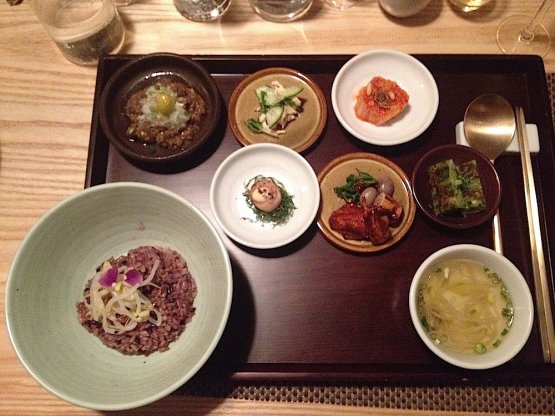Fermentation, everyone’s speaking about it. People noticed there’s a B-side to express cuisine. That raw materials cooked after being picked or caught are not necessarily better than those left to rest for months (or years) in contact with the “cold fire” of bacteria (a brilliant definition given by American writer Michael Pollan). An eternal instinct which today is the object of an evaluation going beyond the initial meaning of this technique, born to give longer life to a particular food in harsh climates or during famine.
In the west, it is true, we have always fermented cheese, cured meat, wine, beer, cabbage. For centuries we’ve been careful not to cross the boundary between fermented and rotten or decayed food. Today, however, we are more fascinated by the elements that increase the deliciousness of a fermented food because in many cases these alterations make it tastier. In this sense, no one has a stronger tradition than Asia, and Korea in particular.

GUIDES. Our exceptional guides around the markets in Seoul: Mingoo Kang (chef at restaurant Mingles) and Jinmo Jang (restaurant And), 60 years between the two
In Seoul every family has two fridges at home: a normal one and one for fermented food. The latter has lower temperatures than the former and must be opened as little as possible. Koreans have always been fermenting all sorts of things: fish, meat, vegetables. An obsession we tried to investigate. For some it is an identity-making gesture of self-consolation, a reaction to the millennial siege of the never-loved Chinese and Japanese neighbours: our food is more than enough. And should we ever have famine or harsh winters, we’ll manage.
There’s pride, therefore, in the making of the great fermented sauces, the true pillars in Korean cuisine: gan-jang (soy sauce), gochu-jang (a very spicy paste made with red peppers, boiled soybeans and salt), doen-jang (a paste made with soybeans), herbs and spices. It is a complex world a one-week trip could not cover completely. Just like one would need an entire life to report on all the kimchi, the fermented vegetables, the most famous symbol of this country abroad. In the 8 regions forming the country they make it in a thousand ways or so. The most popular one (Geot-jeori) is made with fermented cabbage or lettuce in gan-jang, gochu-jang and sesame oil.

BIBIMBAP. Bibimbap as prepared by chef Mingoo Kang. This is the country’s national dish: rice with stir-fried beef and a combination of varied vegetables on the side. They often add gochu-jang, a sauce made with fermented red peppers and soybeans and salt. Mingoo’s version includes crabmeat
Still, this is just a portion of a world that has infinite edible categories that are unknown to most people, such as
myeon (noodles and dumplings),
bap (dishes made with boiled rice but also barley and beans),
guk tang (fish, meat, sea fruit, sea weeds or vegetable soups),
jjigae (stews),
jjim (braised dishes),
bokkeum (stir-fries),
hoe (raw fish, Korean sashimi),
banchan (side dishes),
tteok (rice cakes) and much more.
And let’s not speak about the universe of drinks, from the ubiquitous makgeolli, fermented rice, to the various nockha (green tea), maesil-cha (tea made with a green plum syrup), sujeonggwa (fresh ginger and cinnamon), sikhye (rice fermented in malt). We have collected all these fascinating products in the following photo gallery. A journey discovering very rich and tidy markets as well as the restaurants and protagonists in traditional and avantgarde cuisine. Delicious products that create a great ferment in other cuisines around the world.